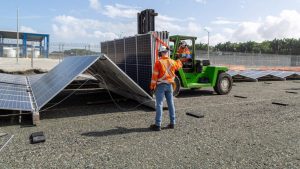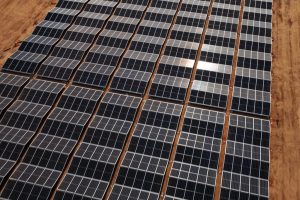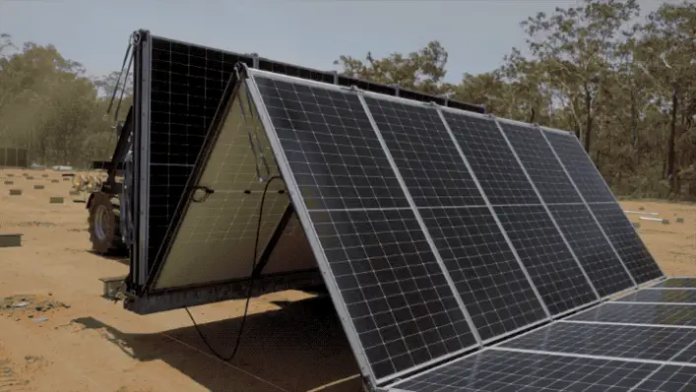When a crew of eight workers started installing solar panels at a site in Australia last year, they covered an area larger than a soccer field with 2,250 solar panels in a single day.
That’s 5 to 10 times faster than solar installations usually happen, according to 5B, the Australian company that designed the system used at the site. Instead of putting in each panel individually, the company makes an accordion-like structure that’s wired with 90 panels. (In the daylong installation in Australia, it meant placing 25 structures instead of 2,250.) When it’s delivered to a solar farm, the whole thing can quickly be popped into place.
“Historically, solar farms have been built like a multimillion-piece puzzle in a [field], often in extreme heat,” says David Griffin, CEO of 5B. “It’s expensive, it’s high risk, and it’s increasingly difficult to cost-effectively scale, as solar farms become larger and more remote.”
As the number of large solar farms grows, it’s also hard to find enough workers. Some other startups are taking different approaches to the problem, like Charge Robotics, a California-based company that’s developing a robotic system for solar installation. At 5B, the process was sped up just by rethinking how panels are laid out.
 HOW 5B’S ACCORDION-LIKE SYSTEM WORKS
HOW 5B’S ACCORDION-LIKE SYSTEM WORKS
The company puts solar modules from other manufacturers into its structure, which is more than 130 feet long and about 20 feet wide. After all the wires are connected, the array is folded up and can be delivered in a shipping container or on a truck. On-site, it’s unfolded with a forklift.
“It’s preassembled and plug and play,” Griffin says. “This allows us to get in and get out faster. It significantly reduces cost and risk in the field and the chance of weather events delaying projects.”

It also has fewer moving parts than typical solar installations, which makes it more durable. (The design can withstand hurricanes, which is why one of the next deployments will be in Puerto Rico; the island’s grid is still being rebuilt after damage from hurricanes Irma and Maria.) 5B’s system is compact, so a field can generate more solar power in the same space than it would have with a conventional installation.
If land needs to be put to another use, the installation can be folded back up and moved. At a lithium mine that used the technology, for example, the mine owner can pack up the panels after the area has been fully mined. “Being redeployable means miners won’t be left with a stranded asset,” Griffin says, noting that developers can also install temporary solar farms before construction starts on new buildings. The product, he says, “can be folded up as easily as it’s unfolded.”






